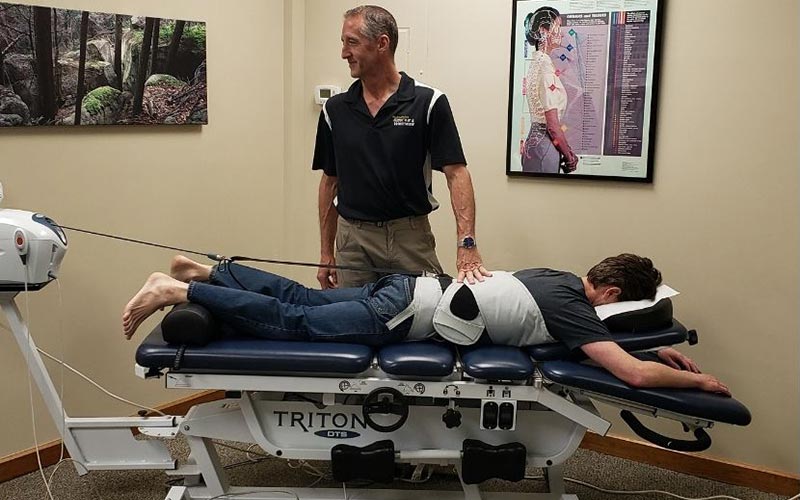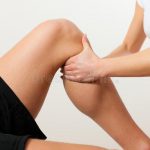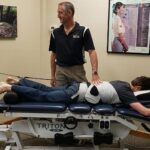Why Back Pressure Builds Over Time
Chronic back pressure usually appears after months or years of small daily habits that slowly overload the spine. Sitting for long periods places weight on the lower back. Leaning forward at a desk changes the natural curve of the spine. Repetitive lifting or twisting strains the joints. These patterns tighten the supporting muscles and reduce the motion of the discs that cushion the vertebrae. When the spine stays compressed, the pressure becomes a steady part of the day and rarely improves on its own.
Many people try to manage their discomfort with light stretching or short periods of rest. These can feel good at first but do not always reach the deeper structures that remain squeezed. Without a method that opens the joints, the pressure often returns. This is why focused decompression has become a helpful option for those who want steady relief rather than temporary changes.
How Spinal Decompression Works
Modern decompression aims to create more space between the joints of the spine. When the body is guided through a controlled pull along its length, the vertebrae separate slightly. This reduces pressure on the discs and surrounding nerves. Some techniques use slow traction. Others create a stronger full spine pull that engages the entire column at once. The choice of method depends on the person and how their spine responds.
The idea is simple. A spine that moves freely is better able to support daily activity. When pressure is reduced, the muscles do not need to tighten as much to protect the area. This helps the body work in a more natural way.
The Rise of Modern Decompression Methods
Interest in spinal decompression has grown, partly due to the visibility of full spine methods online. One of the most recognized is the Ring Dinger. This technique was created and refined by Dr. Gregory Johnson at Advanced Chiropractic Relief in Houston. It uses long axis traction to create a complete release from top to bottom. Many people describe a strong but controlled sense of relief as the pressure leaves the joints. Dr. Johnson has spent many years teaching this method and showing how full spine traction can help those who need a more complete form of decompression.
Common Techniques People Search For
Clinics use several approaches to decompression, and every method provides a slightly different experience.
Examples include:
- Full spine traction tables that provide steady, gentle stretching
- Manual long axis stretching guided by hand
- High velocity decompression such as the Ring Dinger
- Targeted traction that focuses on one area rather than the entire column
Each approach can serve different needs. Some people respond well to slow traction. Others need a more complete release to feel a difference.
What a Decompression Session Feels Like
A session usually begins with a short review of the person’s symptoms and movements that trigger pressure. The provider checks spinal alignment, hip balance, and muscle tightness. Once the person is positioned, the decompression is carried out in a controlled way. Many feel a sudden release followed by a lighter sense in the back. Some feel mild soreness afterward as the joints adjust to the new space. A good provider explains each step and ensures the person is comfortable throughout the process.
When to Seek Professional Care
Certain signs suggest it may be time to consult a provider trained in decompression. These include pressure that returns each day, stiffness that limits normal activity, or discomfort that does not respond to simple stretching. At this point it can be helpful to speak with a spinal decompression chiropractor. An exam can show which joints are under the greatest strain and whether full spine decompression, regular adjustments, or both may offer the best results.
Simple Habits That Support Decompression Between Visits
Maintaining relief between sessions is an important part of the process. Small choices during the day can help the spine stay open and mobile.
Helpful habits include:
- Changing positions during long work hours
- Using a chair that supports the lower back
- Adding light stretching that targets the hips and mid back
- Taking short walking breaks to ease pressure
- Keeping heavy lifting to a minimum when the back feels tight
These steps help prevent the spine from settling into positions that recreate compression.
A Path Toward Less Daily Pressure
Modern spinal decompression offers a practical way to reduce the stress placed on the joints of the back. Techniques such as the Ring Dinger provide a strong full spine release, while lighter methods offer more gradual change. With guidance from skilled providers and steady habits at home, many people find they can move with greater comfort and less daily tension.







